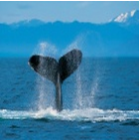In my last report four weeks ago, the Dow stood at 9665 and the FTSE100 at 5082. I said that the main trend was clearly up and still looked healthy. The markets have continued higher, and now stand at 9972 and 5242 respectively. It's worth bearing in mind how things have progressed on a slightly longer timescale. When I called the start of the bull market in May based on the Coppock signal, the Dow was at 8268 and FTSE at 4348, so anyone using a buy and hold strategy as I did for my personal pension has done really well. The large, nine-month head & shoulder bottom areas which completed in July are still indicating more upside potential with their targets of 11,200 and 5725. Both indices would meet some resistance at those levels, but there isn't much resistance on the way up to those targets, which gives them a good chance of being reached.
Head & Shoulder targets have been very accurate in recent years on the indices. In 2003 the Dow completed a nine-month H&S bottom which reached almost to the point a 1700 point move indicated by the pattern. In 2005 the Nikkei completed an amazing four-year H&S bottom and again fulfilled its target - a massive 4400 points away. Finally the Dow completed a nine-month head & shoulders top in January 2008 which initiated the bear market. This one, of course, massively exceeded the target - remember, targets are a minimum move.
In the current situation, we once again have nine-month patterns, a duration that I regard as highly reliable. Time is the key to reliability. A two-month H&S pattern would be nowhere near as reliable as a nine-month version, and I wouldn't want to make any major decision based on such a short duration. But once you get above six months then they become much more reliable, and then I'm prepared to trust the pattern.
Even if you're not really a technical analyst, I'd say you should definitely get to know your head & shoulder patterns - both tops and bottoms - since it's fair to say that most of the bull/bear market junctures in recent years in the key indices have been such patterns. Count them up - I've mentioned five in this report. The one exception is FTSE's top in 2007/8 which was a double top,…
You say that Gold is a potentially major upside breakout but don't mention anything quantitative. Does your P&F analysis give any price targets?
There's some excellent reading on gold and precious metals trading opportunities using relative moving averages from zealllc http://www.zealllc.com/2009/relatrad.htm . Adam Hamilton writes excellent essays every week on the subject.









